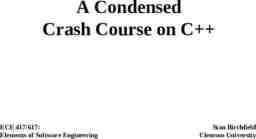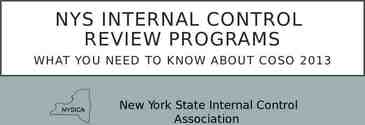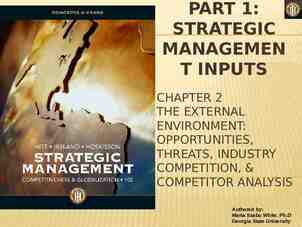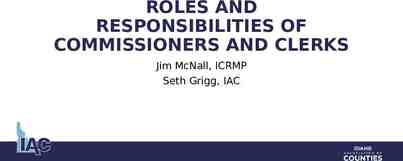Money, Money Market & Inflation Namrata Kishnani
15 Slides1.37 MB
Money, Money Market & Inflation Namrata Kishnani
Money Money is a necessity for modern economy as it is a generally acceptable means of payment or of settling debt fulfilling 3 main functions that is 1. As a medium of exchange between buyers and sellers,transferring value 2. As a unit of account or standard measure of value, standard of deferred payment 3. Is the store of value or of purchasing power enabling the income earners to set aside a part of their income to yield future consumption.(distribution of National Income) Money is a measurable concept which has taken recourse to its majorly two functions that is a medium of exchange and a store of value which indicates and measures the value of money or the quantity of money. For rendering money into a measurable concept,its for exchange effectiveness ( currency along with it the demand deposits as the liquid money ) while term deposits are a part of store value of money as they are not easily converted into cash as demand deposits. It includes deposits of all commercial, cooperative Banks , post office savings bank.
Functions of Money Primary Medium of exchange and Measure of value Secondary Store of Value , Transfer of value , Deferred payment Contingent Distribution of National Income, Basis of credit, Maximize satisfaction, Productivity of Capital
Four measures of Money M1 consists currency notes and coins with public demand deposits with bank both commercial and cooperatives and other deposits with the reserve bank of India. M2 It's constituted of M1 plus post office saving bank deposit. M3 is made up of M1 and time deposits with bank commercial and cooperatives. M4 is M3 plus total deposits with the post office savings organization. M1 is also called as narrow measure of money stock because of liquidity and the exchange value of M1 which constitutes of currency and the demand deposits. M3 consisting of M1 and time deposit s of bank bills both the basic function of money as medium of exchange and the store of value does it is called as broad measure of money or aggregate monetary resource. M1 is is highly liquid because of the presence of currency and the demand deposits of bank which is used as a medium of exchange for transactions or the final settlement of claims or debts. While M2 is less liquid as it consists of post office savings deposits which are partly demand deposits but rest of it is not treated as demand deposits.M3 & M4 are still less liquid due to inclusion of time deposits.
Trends and implications It was a continuous rise in the supplies of money with an exception of the initial planning period after the independence where there was a fall in money supply but these negative movements have been small in magnitude making a marginal difference to the main trend of increase in money supply. There was a continuous and gradual increase in money supply in every decade from 1950 s to following decades. The increase quadrupled in 1980s with continuation of trend in 1990s. Larger money supply to meet the needs of an increase in economic transactions which resulted in growth of real national income. Change in habits, consumption and behaviour of people with modernization of economy. Extension of monetized sector due to rural and semi rural trade , demand of money increased. With the rise in income, ratio of cash balances to income also rises. With increase in income larger proportion is kept in form of cash, necessitating larger supply of cash. Continuous expansion of money supply is a stimulant to the economic activity through rise in prices and income as economy develops. Increase in welfare, development consumption expenditure with more investment on infrastructure and industrial development for bridging the gap between consumption expenditure / production distribution
Factors affecting Money supply Factors influencing money supply in the economy emanate from both government and private sector. 1.Deficit Financing - government undertaking expenditure in excess of the receipts in form of taxes or profit from public enterprises by borrowings from reserve bank of India or the public sector banks as it doesn't constituted new money or addition to income of people. The government was involved in rigorous credit creation from banks, sale of securities and so for meeting various expenditures, repayment of debts rather than development planned needs resulting in low increase in supply of productive goods & services. Imposition of more tax to meet repayment of debt created real money burden as reducing purchasing power of consumers, ability to work and save. 2.Bank Credit- incrementing credit needs for meeting payment obligations, production and distribution needs , meeting current expenditure for bridging the gap between production and sale of goods.,operating expenses that led to sharp rise with poor financial system leading to speculation. 3.Change in foreign exchange reserves and money supply with increased demand of foreign currency for payments of imports. The sharp rise in imports, deficits and illegal trade channel due to imposed restrictions saw a surge in foreign currency demands.
Recent developments in Money Supply Reduced influence of deficit financing or monetizing the deficit which have been restricted to a certain predetermined level as per an agreement between GOI & RBI on sep 9,1994 and discontinuing adhoc treasury bills. 2. Increase in foreign assets, reserves on account of equity inflows encouraging foreign private capital by way of fdi and fii which resulted in excess liquidity, proactive role of RBI to keep changes in money supply in prudent limits without increasing inflation through open market operations ( sale or purchase of government securities). 1. RBI & Monetary policy ( banker of government ,controller of credit, Issue short term Credit- t bills,advances banks, issues currency, Rediscounting of bills of exchange, custodian of foreiy exchange reserves, development & promotion, information and research function) Monetary policy gives an overview of economic working, supply of money, Interest rates, inflation, price stability, norms for financial institutions, controlled expansion of money,sectoral deployment of funds to ensure stability. Cash Reserve ratio and Statutory Liquidity ratio Bank Rate- rate at which RBI lends to banks ( rediscount,short /long term Interest rates influence credit creation) Open Market operations Selective control of credit
Mone y Marke t& Tools
Money Market The money market concerns trading and money instruments involving borrowing & lending for short period it is a part of the securities market while the capital market which deals with securities like equities or shares debentures and bonds are dealing in long term securities. Money market is a market in which transactions in short term financial assets takes place that can be readily converted into cash and are close substitutes of money which is borrowed or land for short period. It is a mechanism which equivalates short term surpluses and deficits of the various institutions that market related rates or prices through inter bank transactions in case of banks through money market instruments in case of banks and others does surpluses move to those spacing deficits by deployment of short-term funds. It provides government with valuable services in particular along with the non-inflationary way to finance government deficits during the time of government's own incomes are falling, 2. it allows government to implement the monetary policy through open market operations involving buying and selling of government securities 3. it provides a market-based reference point for setting other interest rates by the government playing an important role in signaling the trends and liquidity & interest rates.
Money Market It is a source of finance for commercial banks and other institutions with limited branch network including foreign banks and wheezing and factoring companies where it is advantages for large corporations to secure funds through issue of short-term securities like commercial papers or treasury bills in the money market but at the same time it reduces the market power of large commercial banks. An outstanding weakness of Indian money market is existence of organized and unorganized markets with a divergence in the structure of interest rates, presence of various government bodies and lots of large size joint stock companies that operate as leaders financial intermediaries/ indigenous bankers.Thus multiplicity of functionaries with no uniformity of practice and dichotomy that makes difficult for RBI to ensure uniform implementation of monetary policy in both sectors. Inadequacies of monetary institutions and instruments despite of rapid expansion of money supply and industrialization have been a shortcoming which led to emergence of unorganized markets. Multiplicity and disparity in the interest rates for the funds of same duration have added to disparities in interest rates of different centres and institutions breathing inefficiencies, immobility of funds and ineffective markets. Shortage of commercial bills due to which they form a small proportion of bank finance in India and prevalence of illegal instruments like hundis which damages the banking system.
Characteristics of Money market 1. Lack of integration of organised structure between different regions, centres etc that led to emergence of huge unorganized structure. 2. Lack of rational interest rate structure. 3. Absence of organized bill market and players. 4. Shortage of funds in Money Market. 5. Seasonal stringency of funds and fluctuations of interest rate 6. Inadequate banking system facilities & credit instruments. 7. Multiplicity of Interest rate 8. Highly volatile Call Money Market
Reforms in Money Market 1.Remitting Stamp duty 7. Develop call / notice money market 2.Deregulation of Money market Interest rates. 8.Sector specific refinance facilities. 3. Introduction of new money market tools. 9. Introduction of MM Mutual fund 4.Introduction of Repo and Reverse Repo rates 5.Setting up of Discount and finance house of India,Clearing corporation (CCIL) 6.Removing constraints on development of term money market & electronic dealing system. Thus improving existing arrangements, promoting sound market and banking system,bill market to absorb indigenous bankers with development of small banks, stepping up banking facilities for increased trading activities, expanding rediscounting, lending / borrowing short term funds, promoting stable and mature money market reducing speculations and fluctuations in interest rates of securities.
Inflation The rise in price which is due to pressure of aggregate demand for goods and services exceeding the available supply of output. Continuous rise in price and acceleration in growth rate of prices since second five year plan and then from early eighties it was skyrocketing at 2.5 times or more. Continuous Price rise due to widening of it sources: primary articles, fuels or power, manufactured or engineering products, equipment and technology year on year basis. Consequences: Adverse impact on investment and savings as instability of investment & prices, diversion of funds in private sector towards short gestation projects, for quick returns and mobilization of large money resources for keeping physical contents of project intact and lastly adverse impact of savings due to increase in price rise exceeding rate of interest. Intersectoral terms of trade- price rose for agricultural goods affecting the marginalized benefitting large farmers and unorganized sector as their real incomes reduced lowering their capacity to save & slashing already low level of living. Leading to rise in prices of manufacturing goods. Adverse effect on India’s payment position due to domestic prices increasing, dependency of foreign loans, increasing demands of imports, fall in value of rupee demoralising traders, shortage of foreign reserves lead to leakage through smuggling, unsatisfactory position of middle class and marginalized left with no savings & gross income inequalities. Continuing rise adversely affecting consumption of weaker sections.
Increase in money supply Deficiency of capital equipment Increase in government spending ( expenditure) Scarcity of other complementary factors of production like skilled labour Deficit spending for development Increase in imports for earning required foreign exchange Increase in disposable income Increase in community's aggregate spending on consumption and investment goods Excessive speculation and hoarding Increase in foreign demand i.e. exports of items Decrease in exports owing to war or import restrictions due to deficit in bop Draught ,famine or other natural calamities Prolonged industrial unrest resulting in reduction in industrial output. Increase in wages & salaries ( DA included) Rising cost of raw material and supplies Increase in population Inadequate agriculture and industrial
Government's Policy Management of Demand- reduce deficit financing, check quality of bank credit,black money, tax evasion,watch on expansion of money Increase in supply of goods- increase in production,control stocks and imports of goods. Public distribution of essential goods , services Redesign public distribution Integration of price and income Economic devaluation of currency within means Improving fiscal affairs- cut down govt expenditure, Improve efficiency of public enterprises from real resources rather than deficit financing passing out inefficient to private sector, not raising demands of foreign exchange with unreasonable imports. Checking the income price effect, percolation of money and Monetary control




















